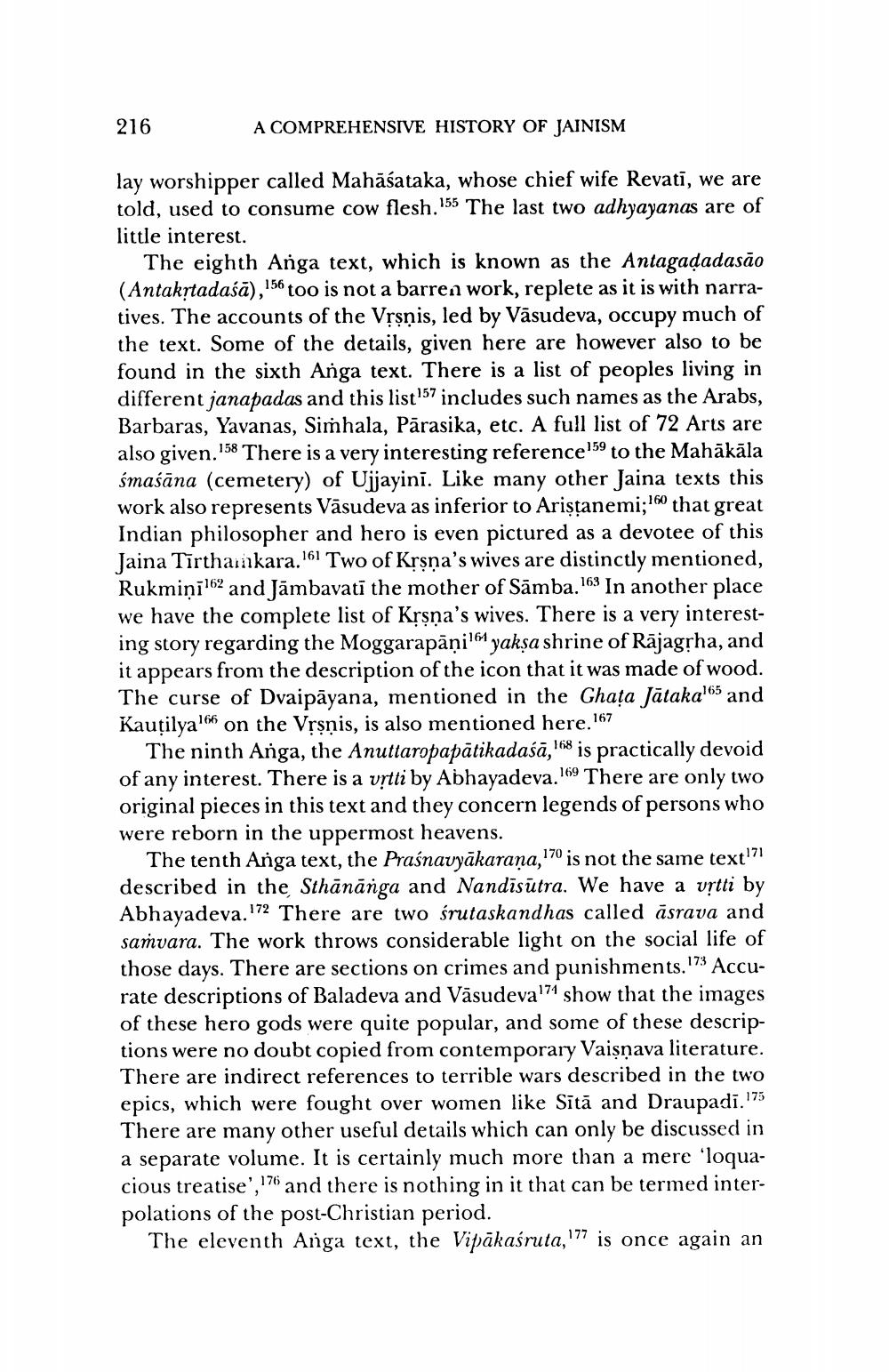________________
216
A COMPREHENSIVE HISTORY OF JAINISM
lay worshipper called Mahāśataka, whose chief wife Revatī, we are told, used to consume cow flesh.155 The last two adhyayanas are of little interest.
The eighth Anga text, which is known as the Antagaďadasāo (Antakstadašā), 156 too is not a barren work, replete as it is with narratives. The accounts of the Vrsnis, led by Vāsudeva, occupy much of the text. Some of the details, given here are however also to be found in the sixth Anga text. There is a list of peoples living in different janapadas and this list157 includes such names as the Arabs, Barbaras, Yavanas, Simhala, Pārasika, etc. A full list of 72 Arts are also given.158 There is a very interesting reference59 to the Mahākāla śmaśāna (cemetery) of Ujjayinī. Like many other Jaina texts this work also represents Vasudeva as inferior to Aristanemi;160 that great Indian philosopher and hero is even pictured as a devotee of this Jaina Tirthaikara. 161 Two of Krsna's wives are distinctly mentioned, Rukmini 62 and Jāmbavati the mother of Samba.163 In another place we have the complete list of Krsna's wives. There is a very interesting story regarding the Moggarapāņi!64 yakșa shrine of Rājagsha, and it appears from the description of the icon that it was made of wood. The curse of Dvaipāyana, mentioned in the Chata Jätakal65 and Kautilyath on the Vrsnis, is also mentioned here.167
The ninth Anga, the Anuttaropapātikadašā, it is practically devoid of any interest. There is a vịtti by Abhayadeva.169 There are only two original pieces in this text and they concern legends of persons who were reborn in the uppermost heavens.
The tenth Anga text, the Praśnavyākarana,170 is not the same text171 described in the Sthānānga and Nandisutra. We have a vịtti by Abhayadeva.172 There are two śrutaskandhas called asrava and samvara. The work throws considerable light on the social life of those days. There are sections on crimes and punishments.173 Accurate descriptions of Baladeva and Väsudeva!74 show that the images of these hero gods were quite popular, and some of these descriptions were no doubt copied from contemporary Vaisnava literature. There are indirect references to terrible wars described in the two epics, which were fought over women like Sītā and Draupadi. 175 There are many other useful details which can only be discussed in a separate volume. It is certainly much more than a mere 'loquacious treatise', 176 and there is nothing in it that can be termed interpolations of the post-Christian period.
The eleventh Anga text, the Vipākaśruta,177 is once again an




